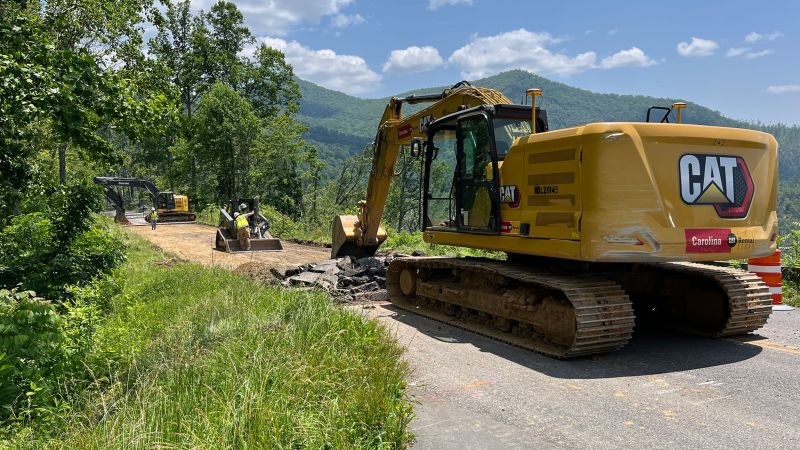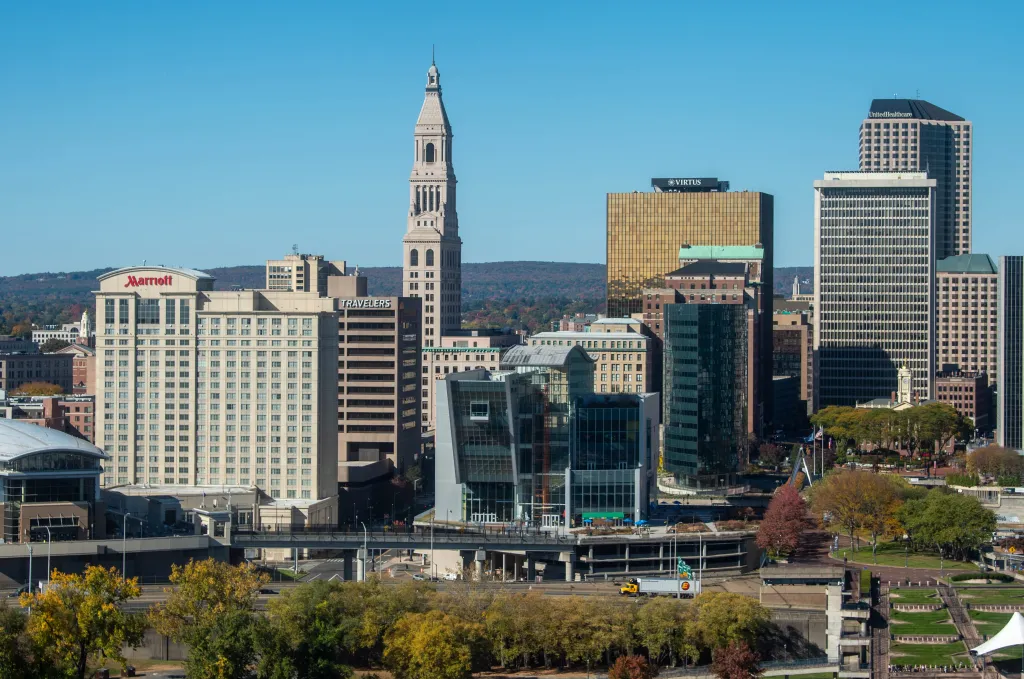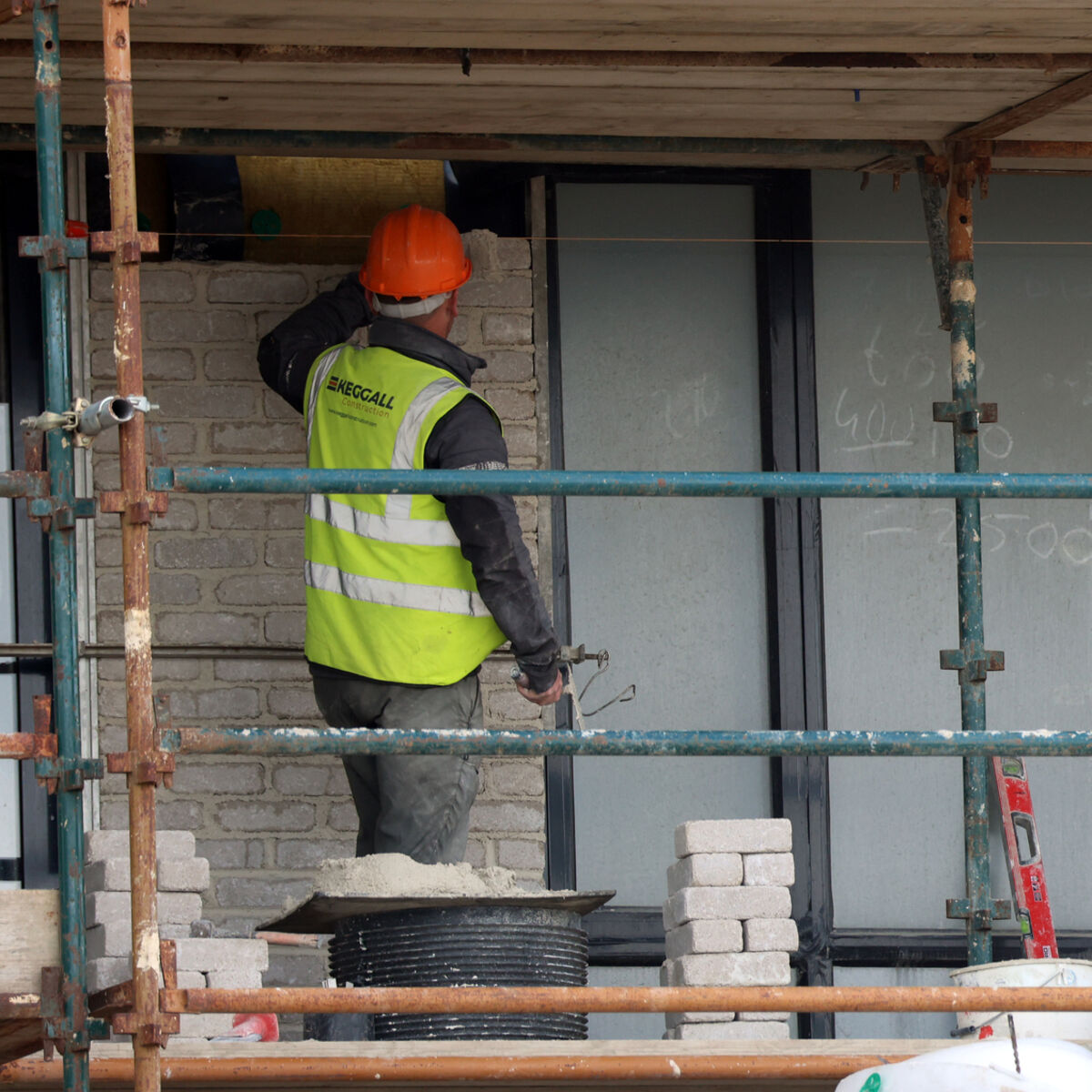Blue Ridge Parkway section reopening spurs economic impact in Asheville and Western North Carolina region

A 26-mile stretch of the Blue Ridge Parkway has reopened in western North Carolina – just in time for the busy fall season – marking a major milestone in the state’s recovery nearly one year after Hurricane Helene devastated much of the region.
The 469-mile scenic roadway managed by the National Park Service winds through North Carolina and Virginia. The famed route experienced extensive blowdowns, erosion, and landslides, resulting in much of the roadway being impassable after Helene struck in September 2024.
More than 16.7 million people visited the parkway, making it the second-most visited NPS site in 2024, according to data from the agency.
This section of the southern Appalachian Mountains attracts numerous tourists from across the US who want to experience breathtaking views and picturesque landscapes. The city of Asheville, nestled in the Blue Ridge Mountains, thrives on tourism.
More than 30% of Asheville’s yearly traffic occurs in the fourth quarter, according to Explore Asheville, and local businesses’ profits cratered, taking a devastating hit in 2024 as they wrestled with storm impacts.
The reopening of this section of the roadway stretches from Asheville to the entrance of Mt. Mitchell State Park, home to the tallest peak east of the Mississippi River.
Businesses and locals are anxious and hopeful that this reopening will restore much of the traffic and tourism dollars they lost last year. More than $1.3 billion was spent in communities along the parkway in 2023, according to the NPS. However, with the remaining repair work needed on the roadway, they are cautiously optimistic.
Helene unleashed 57 landslides on the parkway
Helene decimated swaths of the Blue Ridge Parkway in North Carolina, with damage occurring along 200 miles of the roadway, the NPS said.
In the wake of the storm, at least 57 landslides of varying complexities blocked the route, according to the NPS. Work to restore the parkway to its glory began after the storm passed and is ongoing.
The opening of this section marks the first phase of completion of a three-phase system that the NPS created to restore the route.
NPS officials are aiming to restore the parkway by the fall of 2026.
Helene’s stain on the parkway and the surrounding areas in western North Carolina can still be seen today. Lingering debris piles and damage still line sections of the Swannanoa River in Asheville, said Franklin Tate, an associate regional director for the Appalachian Trail Conservancy, the organization responsible for managing and protecting the longest hiking-only footpath in the world.
Businesses have struggled to survive
Despite immense progress, local businesses are still reeling without full access to the roadway. Jeremy Poore, 49, of Old Fort co-runs Mountaintop Shuttle, a shuttle business that relies on a portion of the parkway that remains closed.
“We still can’t drive to the parkway where we need to, even with the new awesome news of opening from Asheville up to Mount Mitchell,” Poore said.
Poore’s business transports mountain bikers to various points along the Blue Ridge Parkway for downhill adventures along the Appalachian Mountains across western North Carolina.
Helene devastated the town, where Poore operates, and he was unable to manage his business during the first few months after the storm. During the parkway’s closure, shuttle revenue tanked 98%.
Poore pivoted to other ventures to make ends meet after the storm struck, including trail clearing, trail education and intensive workshops on trail maintenance.
Randy Claybrook, 60, runs the Bent Creek Lodge out of Asheville which draws people coming into the city looking to explore the Blue Ridge Parkway.
The lodge lost all of its October revenue in 2024 after Helene wiped out Asheville’s water infrastructure. The storm struck right before Asheville’s peak leaf-changing season, when local businesses charge higher rates for tourists.
Asheville restored its supply of drinking water on November 18, 2024, ending a 53-day outage caused by the storm that closed restaurants, bars, and lodges at the height of the fall season.
Another factor contributing to the loss of business after Helene was that people were hesitant to visit Asheville due to uncertainty about the passability of the roads, Claybrook said.
“After a catastrophe, a lot of our tourism evaporated, even though many of the restaurants, bars and art places were able to open in December, people were staying away, and because of that, we just weren’t able to bring in dollars to have a good steam of headroom to get through the winter,” Claybrook said.
From fiscal year 2024 to fiscal year 2025, Claybrook said his business experienced a 25% decline in revenue, and he reported a total loss of $150,000 since Helene struck.
Claybrook hopes to see a resurgence of bookings to reach the pre-Helene numbers he had, but he stressed that there still seems to be a hesitance from people looking to visit the region.
There’s a collective belief that it feels like tourists are sitting back and waiting a bit to visit Asheville due to the uncertainty of the conditions in the tourist hot spot, Tate said.
“I feel like Helene is stuck in people’s minds a little bit more…because it was so unusual to be seeing that kind of devastation up in the highlands of the southern Appalachians,” Tate added.
Optimism for the incoming season
After losing out on last year’s fall season, businesses are hoping milestones like the recent reopening of the Blue Ridge Parkway will encourage more people to visit.
Currently, there are 114 continuous miles of the parkway open from Cherokee to Asheville, and several small communities like Black Mountain are looking to benefit from this year’s fall season.
The beauty of the fall colors is the primary driver of why people come to visit Asheville and western North Carolina, Vic Isley said.
Isley stressed the importance of the fourth quarter for the overall economy of the region; both the fall foliage and holiday season are incredibly important for small businesses in their community.
“People count on hopping on the parkway and transitioning from one place to another when they visit Asheville,” Tate said.
Claybrook’s lodge is 65% booked for October, and he believes that the business will approach 90% for the year.
“When people can have the opportunity to travel up the Blue Ridge Parkway – in less than 40 miles – and go from 2,000 to 7,000 feet, you see amazing color changes all in the same day, it is jaw-dropping beautiful,” Claybrook said.



